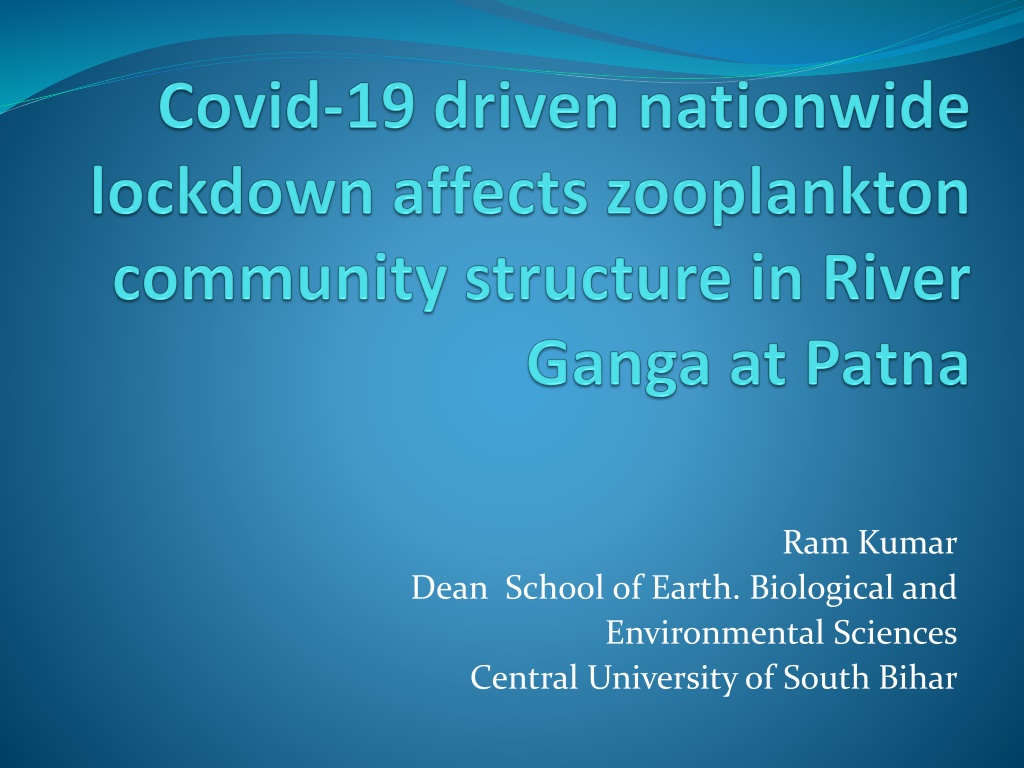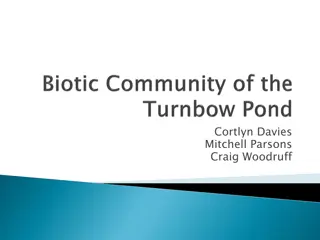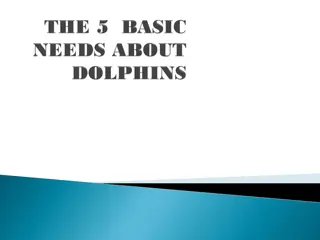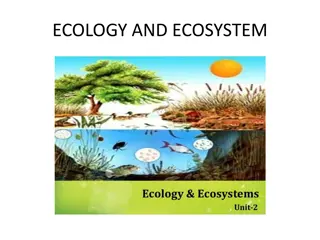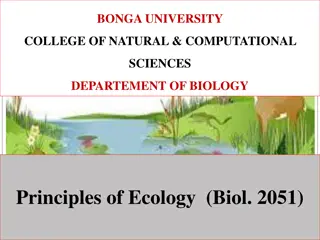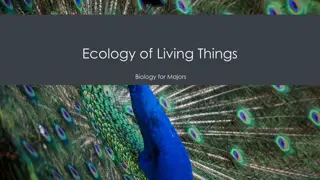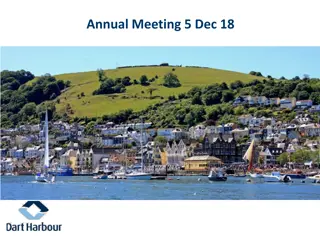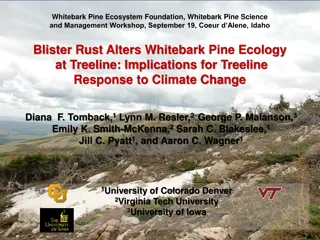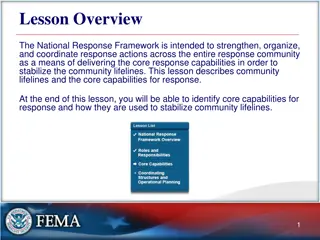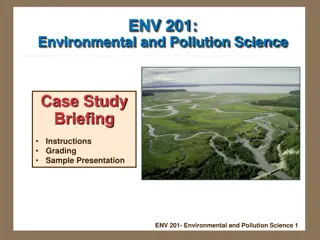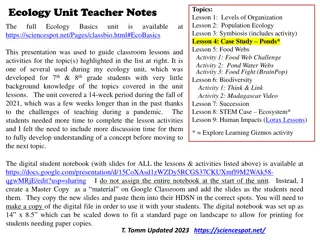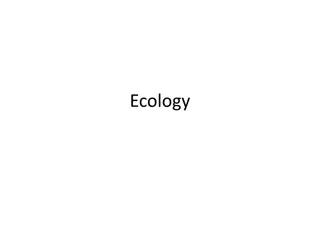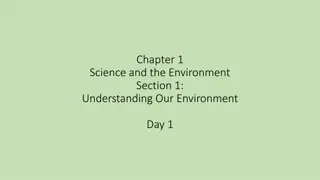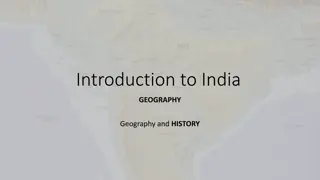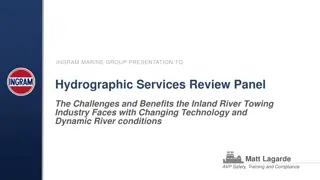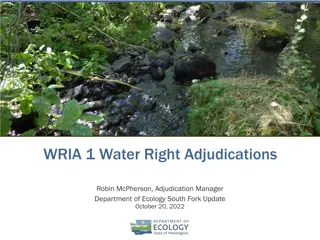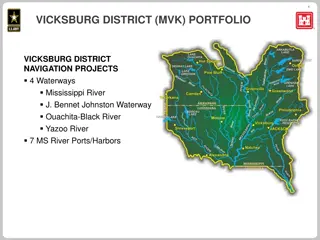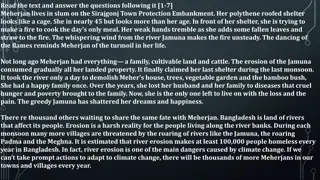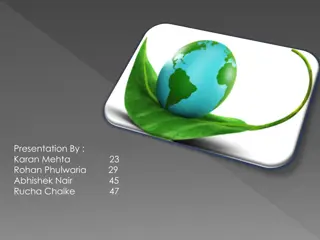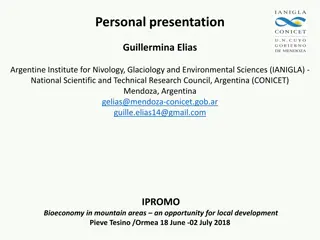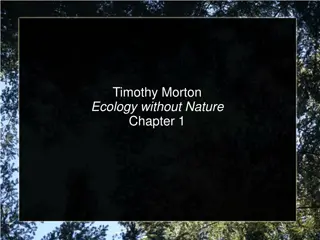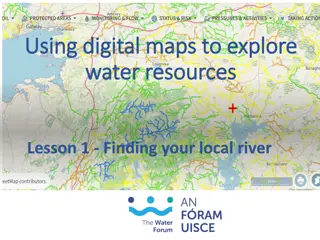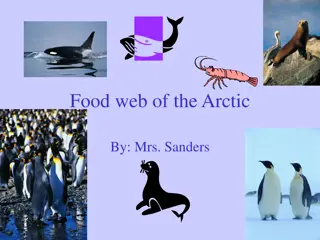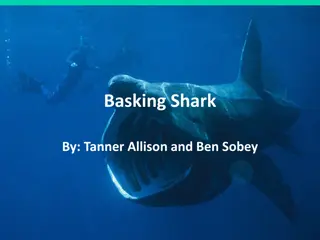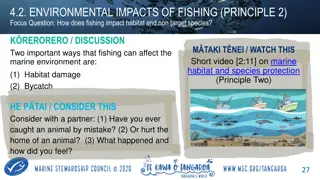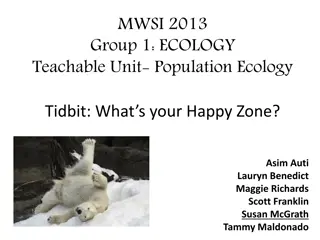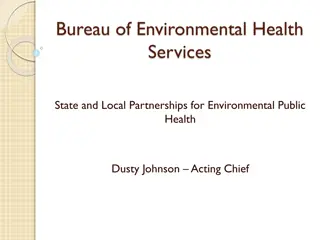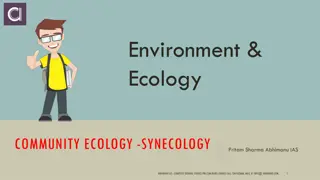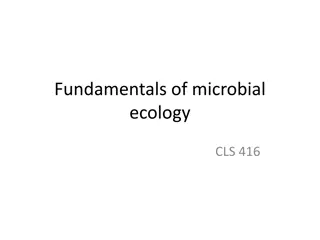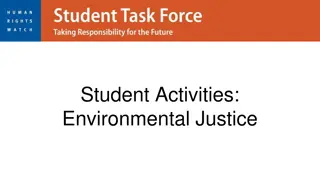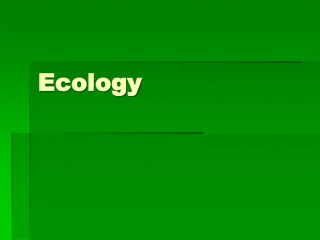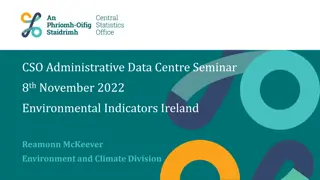Ecology Study of Gangetic River Dolphins and Zooplankton Community Response to Environmental Changes
Ram Kumar, Dean of School of Earth, Biological, and Environmental Sciences at Central University of South Bihar, leads a study on the Gangetic river dolphins, highlighting their ecology and distribution factors. The impact of the COVID-19 lockdown on aquatic ecosystems is discussed, focusing on zooplankton as bioindicators. The study aims to understand short-term changes in the ecosystem structure and response of zooplankton communities to environmental shifts.
Download Presentation

Please find below an Image/Link to download the presentation.
The content on the website is provided AS IS for your information and personal use only. It may not be sold, licensed, or shared on other websites without obtaining consent from the author. Download presentation by click this link. If you encounter any issues during the download, it is possible that the publisher has removed the file from their server.
E N D
Presentation Transcript
Ram Kumar Dean School of Earth. Biological and Environmental Sciences Central University of South Bihar
Introduction The Gangetic river Dolphin is mainly solitary and non social, once in a while found in little gatherings. Prey accessibility, water quality and volume are restrictive factors for their abundance. An indicator species for the river ecosystem, being at the apex of the food chain
The distribution and ecology of dolphins is affected by several abiotic and biotic factors (Canadas et al., 2002; Yen et al., 2004; Tynan et al., 2005), However, the ecological field studies of dolphins become challenging. The task is to observe and count dolphins while simultaneously measuring physical variables and plankton and fish abundance at relevant spatial and temporal scales (Croll et al., 2005).
Govt. of India declared nation wide lock down on 24 March 2020, limiting movement of the entire 1.3 billion population of Indiaas a preventive measure against the COVID-19 pandemic in India. Lock down completely stopped industrial units and people s movement, some reports suggested that dolphins started appearing at many sites and self purification machinery of the ecosystem started functioning optimally in the absence of human intervention. The short term changes in the aquatic ecosystems can be reflected in changes in zooplankton community structure. Zooplankton are reliable indicators of the aquatic ecosystems They show immediate response to changes in its ambient environment in terms of relative abundance, functional groups and production of resting stages.
They constitute the food base for many invertebrates, their developing stages and larval fish, They are an important driver of community structures in aquatic ecosystems (Cohen et al., 2003; Roy, 2007; Nautiyal, 2010 The zooplankton community was represented by diverse feeding groups including herbivores, carnivores, detritivores and bacterivores
Objectives The short term changes in the aquatic ecosystems can be reflected in changes in zooplankton community structure. Zooplankton are reliable indicators of the aquatic ecosystems They show immediate response to changes in its ambient environment in terms of relative abundance, functional groups and production of resting stages.
To elicit the impact of the current lock down - we compared zooplankton abundance, diversity and community structure of zooplankton OBJECTIVE: To elucidate the effects of Covid-19 forced lock down on Zooplankton community: absolute and relative abundance and fractions of functional feeding groups. Comparison of data recorded during the current lock down with data recorded during 2018 and 2019 in our time series study as part of our DBT sponsored project (BT/PR20543/BCE/8/1398/2016)
Methods Monthly zooplankton samples were collected at both the sampling sites using 53 m mesh size plankton net since January 2018 by filtering 45-50L of river water. Zooplankton were immediately fixed in 4% buffered formalin. Zooplankton were identified to the lowest possible taxa and segregated on the basis of taxonomic and functional feeding groups.
Water samples: Through routine monitoring of water quality of river ganga at selected sites in Patna, we studied the impact of lockdown on the quality of Ganga river water and zooplanktonic diversity at selected site During each sampling, the water samples were also collected to monitor other microbial and chemical properties Total coliform Fecal coliform Dissolved oxygen BOD COD, TSS & TDS
Results The parameters indicating high level of river pollution have subsided during the lockdown period. Amount of dissolved oxygen has increased significantly While those of COD, BOD, total suspended solid (TSS), total dissolved solid (TDS), recorded decreasing trend Total coliform (TC) as well as faecal coliform (FC) records significantly decreased values.
BOD at Antaghat 3.5 BOD at Gorhatta 3 3 2.5 2.5 2 mg L-1 2 mg L-1 2019 1.5 1.5 2020 2019 1 1 2020 0.5 0.5 0 0 Jan Feb Mar Apr May Jun Jul Aug Sep Oct Nov Dec Sampling Month Sampling Month DO at Antaghat DO Gorhatta 10 12 9 8 10 7 8 6 mg L-1 mg L-1 5 6 2019 4 2019 2020 4 3 2020 2 2 1 0 0 Jan Feb Mar Apr May Jun Jul Aug Sep Oct Nov Dec Sampling Month Sampling Month
Total coliform at Antaghat Total Coliform Gorhatta 40000 30000 35000 30000 25000 MPN 100L-1 25000 MPN 100L-1 20000 20000 2019 15000 15000 2020 10000 2019 10000 5000 2020 0 5000 Jan Feb Mar Apr May Jun Jul Aug Sep Oct Nov Dec 0 Sampling Month Jan Feb Mar Apr May Jun Jul Aug Sep Oct Nov Dec Sampling Month Fecal coliform at Antaghat Fecal Coliform Gorhatta 30000 2019 25000 10000 2020 9000 20000 MPN 100L-1 8000 7000 MPN 100L-1 15000 6000 5000 10000 4000 2019 3000 5000 2020 2000 0 1000 0 Jan Feb Mar Apr May Jun Jul Aug Sep Oct Nov Dec Jan Feb Mar Apr May Jun Jul Aug Sep Oct Nov Dec Sampling Month Sampling Month
Zooplanktonic diversity Zooplanktonic diversity shows increasing trends after starting of lockdown at both of the site. Cladoceren abundance is increasing as the lockdown is extended, The rotifer abundance decreases, While TC and FC also records decreasing during the lockdown. The results indicate that the bottom up effect might be working as Dolphins are spotted more frequently during the lock down.
Bottom up Effect Dolphin Fishes Aquatic community in river Ganga Juvenile fishes Rotifer Cladocerens Phytoplankt on TC/FC
Zooplankton Abundance at Anta Ghat Zooplankton Abundance at Anta Ghat 30 25 20 Abundance L-1 15 2018 2019 2020 10 5 0 Jan Feb Mar Apr May Jun Jul Aug Sep Oct Nov Dec Sampling Month
Species richness Zooplankton Richness at Antaghat 16 14 12 10 Number L-1 8 2018 2019 6 2020 4 2 0 Jan Feb Mar Apr May Jun Jul Aug Sep Oct Nov Dec Sampling Month
Zooplankton Abundance Zooplankton Abundance at Gurhatta 25 20 Abundance L-1 15 2018 2019 10 2020 5 0 Jan Feb Mar Apr May Jun Jul Aug Sep Oct Nov Dec Sampling Month
Species richness Zooplankton Richness at Gurhatta 14 12 10 Number L-1 8 2018 2019 6 2020 4 2 0 Jan Feb Mar Apr May Jun Jul Aug Sep Oct Nov Dec Sampling Month
Gorhatta 100% 90% 80% 70% 60% 50% Copepods Cladocerns 40% Rotifers 30% 20% 10% 0% 2020 2020 2020 2020 2020 2020 2020 2020 2020 2020 2020 2020 2018 2019 2018 2019 2018 2019 2018 2019 2018 2019 2018 2019 2018 2019 2018 2019 2018 2019 2018 2019 2018 2019 2018 2019 Jan Feb Mar Apr May Jun Jul Aug Sep Oct Nov Dec
Acknowledgements: DBT,Govt of India for the project (BT/PR20543/BCE/8/1398/2016) Prof. C. R. Babu, University of Delhi, for guidance to continue study during lock down and compare the data with previous years Dr. Dilip Kumar for consistent guidance during the project work Research Scholars; Kumar Rajan, Anant and others
References Roy, S. P., Roy, R., Prabhakar, A. K., Pandey, A., Kumar, R., & Tseng, L. C. (2013). Spatio- temporal distribution and community structure of zooplankton in the Gangetic Dolphin Sanctuary, 2009. Aquatic Ecosystem Health & Management, 16(4), 374-384. Canadas, A.R., Sagarminga, R., Garcia-Tiscar, S., 2002. Cetacean distribution related with depth and slope in the Mediterranean waters off southern Spain. Deep-Sea Research I 49 (11), 2053 2073. Yen, P., Sydeman, W.J., Hyrenbach, K.D., 2004. Marine bird and cetacean association with bathymetric habitats and shallow-water topographies: implications for trophic transfer and conservation. Journal of Marine Systems 50 (1/2), 79 99. Tynan, C.T., Ainley, D.G., Barth, J.A., Cowles, T.J., Pierce, S.D., Spear, L.B., 2005. Cetacean distribution related to ocean processes in the northern California Current System. Deep- Sea Research I 52 (1/2). Croll, D.A., Marinovic, B., Benson, S., Chavez, F.P., Black, N., Ternullo, R., Tershy, B.R., 2005. From wind to whales: trophic links in a coastal upwelling system. Marine Ecology Progress Series 289, 117 130. Down to earth (Wednesday 15 April 2020) https://www.downtoearth.org.in/news/wildlife-biodiversity/covid-19-lockdown-a- blessing-for-the-endangered-gangetic-dolphin-in-bihar-experts-70470
Thank you for your attention Prof. Ram Kumar ramkumar@cub.ac.in; ecosystem.kumar@gmail.com
